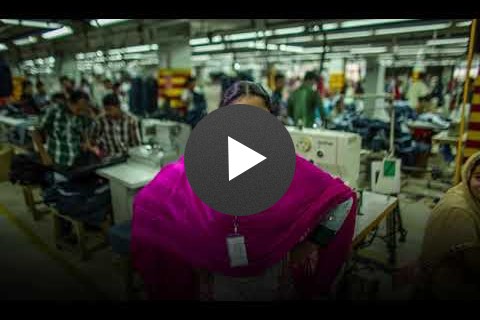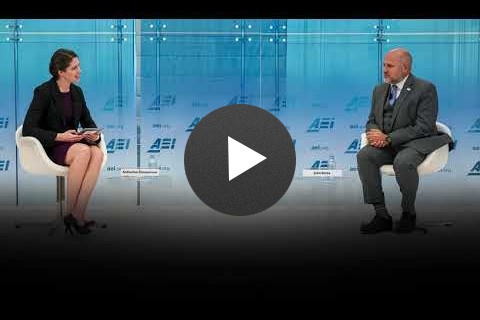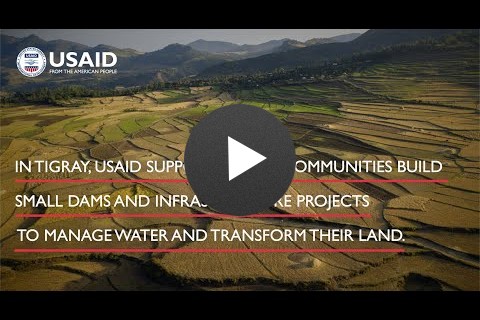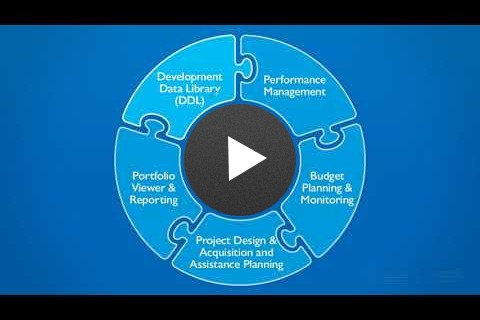Good morning, my name is Sarah Lawson and I'm on the global energy team at the U.S. Agency for International Development (USAID). In my role I've worked on renewable energy auctions in India, Tanzania, Kazakhstan, and many other USAID partner countries. I'm happy to welcome you to today's webinar, the Fundamentals of Renewable Energy Auction Design. This is the first in a series of auctions-focused webinars under the USAID Scaling Up Renewable Energy project, which we like to call "SURE." Renewable energy auctions are a powerful tool to scale up solar and wind and to meet your country's energy target by 2019. 109 countries around the world have held auctions. USAID has supported countries on auctions topics, from providing technical, legal, and financial input to the auctions process and into the RFP, to helping institute IT platforms and algorithms for selection, to capacity building and workshops for key auctions agencies. Most recently, USAID supported Colombia's first renewable energy auctions, multiple auction rounds in Kazakhstan, and technology-neutral auctions in India. This past week, USAID released the Renewable Energy Auctions Toolkit, a new resource to help policymakers and international development professionals design and implement successful energy auctions. The toolkit is a gateway to all items auctions-related, from easily digestible fact sheets to slightly longer papers and guides, training materials, and case studies of USAID partner countries. We have also linked to resources from organizations like IRENA and AURES. We'll be adding material to this toolkit over the coming year. Visit usaid.gov/energy/auctions for more information. I will be your moderator today, and today's speakers are Fabian Wigand, Associate Director at Guidehouse and Ana Amazo, Senior Consultant at Guidehouse. Fabian and Ana have recently worked on auctions with USAID partner countries India, Bangladesh, Laos, and Tanzania. Today's webinar will consist of a 45-minute presentation followed by a 15-minute Q&A session. During the presentation we'll have a fun interactive session that we ask you to participate in in your chat box. You will see a link that takes you to an external site outside of the Zoom platform called Mentimeter. During the presentation, please write any questions you have in the chat box at the bottom of the screen and they will be answered at the end of the presentation. Without further ado, I'll turn it over to our speakers. Thank you so much Sarah, and let me give you a brief overview of today's agenda. So we'll start with the definition of auctions and description of the design process. Then we will have a bidding simulation. We will try to explain to you the concept of the winner's course where you yourself will participate in a simulated auction. We will then explain your prequalification requirements and seeding prices, financial guarantees and penalties, discuss the risk allocation between buyers and sellers, give you some key takeaways on auction design and then we also have a Q&A session where there will be room for discussion. So let me start with the definition of design process How renewable energy functions, how to employ auction functions and how to estimate an effective auction design process. Auctions continue to capture renewable energy price reductions worldwide. Auctions for renewable energy have been in the spotlight a lot recently for that reason. We have seen record prices for solar technologies. For example, in Abu Dhabi in 2020, we saw a 1.5-gigawatt (GW) solar tender with a record low price of $1.3 per gigawatt-hour (GWh). But we also see that new technologies have also achieved record low prices. For example, we had a record low price for a solar and storage auction in Los Angeles. Also for a combined solar and wind with storage auction in Colorado. In May 2020, India achieved a 24-hour renewable supply auction of $0.038 per kilowatt-hour (kWh). So we can see now that with record new prices being achieved also through new technology solutions, this is a good time to take a closer look at how auctions function and how they are designed. So how does an auction work? An auction is a market-based allocation mechanism to competitively procure renewable energy. Take a look at the graph. On the left you will see the tariff of the project, and on the right, the volume of the auction. This volume is the demand, and this can be shown as capacity, energy, budget, grid capacity, or project sites—whatever the auctioning authority wants to procure. In the next step, the bidders offer to build projects for price in response to the volume of the auction. The volume of the bids thereby equals the supply of projects from the project developers. On this graph you can see that qualified bids are ranked from lowest to highest price. On the next slide you can see that then the auction matches the volume demanded with the most competitive offer supplied. Qualified bids are then awarded up to the point where renewable energy supply meets this demand. Depending on the pricing rule, either each project is awarded at the submitted price, or all projects are awarded at the price of the last awarded project. So there are two options to this. As a next you will see the different steps of the auction process. Performing auctions without adequate planning will not achieve low prices and hybridization rates. So, let's look at the different steps of the auction design process. We will start with a target definition. Thereby auctioning authorities define the auction policy objectives, define the capacity for the energy integration in the country, and the institutional capacity of the authority to perform the auctions. After assessing this, they need to perform a market and regulatory analysis, including the expected level of competition and the risk of the project development process. As a next step auctioning authorities need to design the procurement itself, setting the rules, showing that there is sufficient bidder participation, but also that there is sufficient capability and attention of the bidders to build the project and to achieve high realization rates. As a next step the implementation phase occurs, where the auctioning authority is receiving and implementing stakeholder feedback from investors, from developers, from different authorities, incorporates the feedback, and then later we have the evaluation phase, where the auctioning authority will evaluate where the objectives of the auction have been met, whether the design needs to be adapted, and whether and how the auction can be scaled up. In the following, we will investigate the different steps closer. Let's move first to the issue of target definition. It is very important that the auctioning authorities, and the rest of the government together with utilities and the different permitting authorities, clarify the policy objectives early in the process and also consider trade-offs. Common policy objectives within auctions are often the efficient allocation of renewable energy funding—that is for example, achieving the low prices—and the renewable energy target achievement and volume control that means ensuring that projects that are awarded will also be built. But often, these policy objectives also include additional objectives. This can be local value creation, so that, for example, local components, companies, or the workforce are being used in the project. Or the issue of renewable energy system integration that, for example, takes into account good connection cost of awarded projects. While a government might have many different types of objectives, it's important that often you cannot have it all. You need to recognize that there might be trade-offs between the policy objectives, and that policy objectives need to be prioritized. Common ownership of the most important policy objectives needs to be obtained by all affected parties. Let me give you an example of the target definition in India. Supporting local value creation, India conducted a parallel solar auction with and without local content requirements. In that case, the auctions with local content requirements led to slightly higher prices. This was a way for India to test what the effect of lower content requirements would be on the price. In India, renewable energy system integration has also emerged as a major objective. In some regions, system integration costs of awarded projects represented up to 50 or more percent of recent renewable energy prices. Therefore more recent auctions have prioritized system integration, storage, and even 24/7 supply of renewable energy instead of merely achieving the lowest bids. Before the next slide we can see that market readiness analysis is also an important part of preparing for auctions. This analysis considers the project pipeline, the project development cycles, and investment conditions. You will want to make sure that you will have more volume bid in the auction of projects than demanded from the auction authority; otherwise, there's not sufficient competition. For this it is very important to assess the market and the bidding structure beforehand. It is also crucial to understand the risks bidders are facing in the project development process. For example the delays of permits, environmental or social considerations, or also later currency risks to be able to address them in the design. Let me give you an example from South Africa. There in the first auction that took place, volume demand from the auction authority exceeded market supply potential. So there were not sufficient bidders and bids. So the government was auctioning more than the market could deliver. Knowing this, bidders therefore added a markup on their bids, a bit close to the ceiling price, resulting in high prices in the auction. This was later addressed by the auction authority by simply reducing the demand, and tailoring the demand more towards the supply. As a next step, I would like to conduct with you a bidding simulation. And I want to do that while trying to explain to you the concept of the winner's curse. If we go to the next slide, you will see the instructions for you, the participants. Imagine you're all bidders in an auction and you're all participating with one renewable energy project. In this auction only one project will be awarded by the auctioning authority. There is, however, the situation of uncertain costs at the time of your bid. You do not know the exact cost of the project development yet. This is also in real life often a serious situation, because often you have to submit a bid at a time when, for example, you have not obtained all the permits for the project and therefore cannot fully assess all the costs already. We are simulating this uncertainty by asking you to guess the number of candy in the glass which you saw in the picture. These number of candy is symbolizing your project costs, and we would like you to estimate the number of candy in that glass and to share the number (your estimate) in the poll. For this, please copy the Mentimeter link that you can see in the comment section that was just posted by my colleague, Arai, and open it in your browser. We will then conduct the auction. It will be a static auction with only one round, where all of you submit your bids (your estimate) on the costs at the same time. We will then walk through the auction results and explain them with you. So if you look to the right side you will see the link to the Mentimeter, and I will now hand over to Ana to introduce you to the concept. Thank you, Fabian. Wonderful. I see many of you have successfully connected to our Mentimeter poll, and that we have participants from many places around the globe! Happy to have you all join this online seminar today. Okay, so I see you're getting acquainted with the tool. Now let's move into our bidding simulation. In front of you, you see pictures of a glass filled with candy. For this bidding simulation, we ask you to quickly estimate how many pieces of candy are in the glass. We ask you also to place your estimate as a number into this poll, and you need to do so before the voting closes in the next 17 seconds. Please take a look at the glass. Try to estimate how many pieces of candy there are. Remember, these represent the project costs of your renewable project. And we are closing our auction now, thank you all so much. We will process the results. Thank you, Ana. So while Ana is evaluating the results and will show us a graph on the findings, let me in the meantime briefly introduce you to the concept of the Winner's Curse. The Winner's Curse occurs if the bid price of the winning bid is less than the actual cost of the good. This will result in loss for the auction winner. What is the impact on bidders? If bidders are guided by the cost estimates and the bid strategy, the bidder who underestimated the costs most is actually winning the auction. But with a bidder that severely underestimated the costs of a project, these projects are then quite unlikely to be realized. So what can be reasons for the Winner's Curse? One of them is that bidders might often bid irrationally simply because they are inexperienced bidders, but there might also sometimes be political pressure within the organization of the bidders to win an auction at any price if it is one that is actually not cost-covering. However, also rational bidders might face the problem of the Winner's Curse, and that occurs when bidders do not know the price properly by the time they hand in the bids. For example, if there are higher grid connection costs than originally estimated by the developer, this is the Winner's Curse. If an environmental permit has restrictions on turbine usage and the bidder did not know this at the time of the bid submission, that could also be an example where the Winner's Curse could occur. Or, also on the revenue side, there are risks of uncertainty. So for example, if there's a lack of high-quality visibility studies, this might lead to wrong estimates on renewable energy resources. So, this can be actually tackled—the Winner's Curse can be addressed—by demanding that bidders that participate in the auction with projects Will have pre-develop them to a sufficient stage, to such a stage where you can be sure that bidders already sufficiently know the cost of the project. Ana are you ready with showing the results? Yes Fabian, let me share the results with you, of our simulation. And by the way, thank you for sharing your comments on the site. We have a dedicated Q&A session, but I will actually, following 15 to 20 minutes, be actively chatting with you and trying to address some of the questions in the chat already. But I head over to Ana now. Okay, so I hope you can see my screen now. Yes, we can. Wonderful. So thank you for participating in today's auction. The graph shows bids ranked from lowest to highest and how far below or above they are from the project's real cost of 64 pieces of candy, represented by the orange line. The lowest bid we have was of 24, and this will make it the winner of our renewable project in our auction. However this bid, together with all of those located in the red region, are candidates for the Winner's Curse because these are the bids that most underestimated the true project costs. As a group, though, we see that with a median value of 40 that the estimation of project costs was closer to the true project cost of 64 compared to the bid that won the auction with 24. Auction design can help manage the risk of the Winner's Curse, and in the next sections we will see how. Now we will discuss how prequalification requirements and ceiling prices help control for project quality and maximum tariff costs. To show the importance of technical requirements, I want to start with a simplified representation of the project development process for a bidder. You see the timing of the auction is defined by the technical requirements bidders need to participate in the auction. So in an early auction, bidders may be required to identify the preliminary project site and present evidence of technical and legal capacity. In a late auction, instead, bidders may be required to obtain a building or zoning permit, evidence of a grid connection solution, proof that land use rights are secured, or that environmental and social impacts of the project have been examined. Now we're not saying that these must be required all the time in the late auction, because this very much depends on the market. Just as an example of what would make an auction a late auction in terms of the permits required. The choice between an early and a late auction has important consequences. For example, bidder's knowledge of project risk and costs increases as they develop the project, while the risk of project failure decreases with a late auction compared to an early auction. This is because technical requirements, such as a grid connection solution, building permit, land lease, decrease the risk of a project being delayed since these projects have already become "show-stoppers", or issues that could stop the project until they are resolved. Bidders also know project costs better, which allows them to place cost-covering bids and help prevent the Winner's Curse, as we saw in our bidding simulation example the importance of having sufficient information to place cost-covering bids. However, technical requirements should be implemented in a balanced manner because they also increase costs for bidders. Balancing between attracting competition and ensuring high project realizations is really at the center of auction design and implementation. Since 2013, for example, Brazil requires preliminary grid access authorizations to reduce commissioning delays it saw in previous rounds. However, if permitting and other qualification requirements have been set too high, this could create unnecessary hurdles and costs for bidders. In Mexico, for example, bidders had to interact with 13 agencies to procure permits. We also have the example of Kazakhstan, who wanted to attract bidders and lower prices by accepting renewable projects from certain operating specifications, such as providing reactive power compensation. The aim was to reduce the capital and operation cost of installations if they did not have to provide this property, these reactive power capabilities. I think in here it's important to assess that operating requirements can also change as renewable technologies mature and more grid-aware capabilities become mainstream. Another key participation requirement is the ceiling price, which is a maximum price above which bids will be disqualified. The graph on the left shows an auction without a ceiling price. The clearing price is given at the level where the supply volume meets the demand volume. To your right, it shows an auction with a ceiling price and you see here that while projects one to six are awarded, project 7 would not be because it is offering to build the project at a tariff above the defined ceiling price. One could argue that competition is what leads to lowering prices and that a ceiling price risks bidders crowding under it. And yes, in situations with low competition, bidders have the incentive to bid close to the ceiling price because there is a high chance they will be awarded. However, we notice that using a ceiling price can do more good than harm because it puts a cap on PPA tariff costs and increases budget certainty for years. Still, setting the ceiling price at an appropriate level is not a trivial exercise. It can be based on an assessment of generation costs by calculating the levelized cost of electricity or a previous feed-in tariff. In any case, the ceiling price should be adjusted regularly to reflect market and price developments. Now we will discuss how financial guarantees and penalties help ensure the seriousness of bidders and increase project performance. Let's start by defining what these are. Financial guarantees are bank guarantees or cash deficits provided by bidders when entering the auction and/or upon being awarded a bid. Penalties are sanctions that increase bidder's cost of compliance, discouraging them from under-bidding. You see on the graph financial guarantees and penalties applied during and after the auction along the auction process, but also while the asset renewable asset is in operation. For example, a bid bond required at the bidding stage becomes a penalty for awarded bidders that retire their bid. A completion bond submitted by successful bidders upon award will be partly or fully confiscated by the auctioneer if the project is not completed on time. But why should we require guarantees or define penalties? Well, to make it costly for the developer to be late or fail to complete a project but also to compensate the off-taker for the costs of procuring electricity from other power plants or the power market. This can be done by defining liquidated damages payable to the buyer per day of delay. Often the completion guarantee helps back the payment of the liquidated damages. Setting financial guarantees and penalties at the right level should be done carefully. Looking at context-specific project costs and considering overall prequalification requirements and penalties to avoid overburdening bidders since they will price this extra level of risk into their bids. A broad question in auction design is also how to attract investments and efficiently allocate risks between buyers and sellers. Today we look at two examples: off-taker risk and foreign exchange risk in power purchase agreements. Off-taker risk results from the risk that the power plant is not dispatched by the off-taker or buyer, and payments to the seller are delayed. In this case, the seller is the operator of the renewable plant. This can happen if the buyer only pays for the power used, which is a challenge for non-dispatchable renewable technologies, or the buyer faces liquidity constraints that lead to delays or defaults on payments to the seller. We wanted to share with you a few measures that help manage off-taker risk, which include take-and-pay clause, defining non-compensable curtailment and setting up liquidity support for the off-taker. To mitigate dispatch risk, consider implementing a take-and-pay clause that requires the off-taker to pay for energy deemed delivered (that means independent from dispatch), but also aim for a balance by defining clear non-compensable events of curtailment and a certain number of hours per year when the buyer can curtail without payment. Now, there is no one-size-fits-all. Number of hours: this needs to be determined based on the market, the share of renewables, power system characteristics, but the overall logic is to give certainty on the revenue to the sellers, but also manage risks for the buyer. In terms of liquidity support, it can help address the risk of payment default and some options include setting up letters of credit, a bank guarantee, or escrow account equivalent to a certain number of amounts of PPA revenue in case the buyer cannot pay in time, or at all, to the seller. The other risk we wanted to discuss is how foreign exchange risk results from the currency mismatch between the buyer's revenues and local currency and the seller's project financing in hard currency, especially debt, if a local finance market is not very liquid. The risk allocation determines how the costs of currency depreciation are allocated between the buyer and the seller. Traditionally, a full tariff indexation to a hard currency has been the way to mitigate foreign exchange risk for sellers, particularly in markets where there is limited existence of EPC companies or financial markets. But it is also important to remember that this full tariff indexation to a hard currency, while protecting very much the seller, results in the buyer assuming all the currency depreciation costs—which can be significant. Some markets might still require a full tariff indexation. The writing taxation mix depends, among others, on which project costs can be paid in local currency. For example, EPC in markets like South Africa or operation and management costs, and how developed local lending markets are. In Kazakhstan, for example, there is a partial tariff indexation in the PPA split into 70 percent indexation to the exchange rate, and 30 percent indexation to the inflation rate. Thank you so much, I hope you continue well. Yes, thanks so much. That was great. Well, as we wait we have had some questions already, but I did just want to kick it off with a general question, which is a lot of countries we see have really ambitious renewable energy targets, but they're just kind of beginning this auction design process. What do you think should be a country's first steps towards holding an auction? And I also wanted to toss something else in there, can you talk a little bit about the importance of multiple rounds and what that can achieve for your market? Thank you, Sarah. Let me maybe address the question on the seven rounds first. I think it is definitely a very good idea to have a smaller-scale pilot auction first with a smaller volume To ensure that basically both the auction authority and the market participants can learn from the auction, and also in case the auction results are not ideal for the procurement entity, that not large volumes of too-high prices are locked in for a long period of time. So usually a pilot auction is a good idea, and I think then the idea of several auction rounds is particularly relevant if the bids have not been awarded, they can basically usually bring the project in the next round again, and I think that's something that also addresses. The comment of Wikis Kruger in the chat, and is the Winner's Curse still relevant? If you have several auction rounds in a way, yes and no. So, of course if you don't get an award you can luckily bring in your project at the next round again, and you might have an opportunity then. However, what needs to be considered is that permits are also only valid for a certain time, right? So I think there is the risk that if you have been pre-developing a project and you're not winning with that project in an auction for two or four years, but at some point the permits are running out, the question is will you get a new one or will the whole business case still be the same after financing conditions and component conditions have changed? But overall it is a good idea to have several rounds of auctions, if the volumes are high enough in each round, because this way the market can learn. And we have seen in many cases, for example in Mexico, where big prices have been reduced considerably after several rounds because the market has become more comfortable and started learning. Great. Maybe you could address the question of what you think should be a country's first steps towards holding an auction? Yeah. So I think the first step is it's really super important to look, to deep dive and to see what are the policy targets you want to achieve in the auction? What are your own institutional capacities? Be aware of traders trade-offs, do a market analysis, and if you don't have a renewable energy market yet, then stimulate that market. I mean, if you don't have project developers in your own country yet, then try to market that auction also internationally. Give bidders sufficient time to prepare for auctions, announce the results and the procurement packages rather early so the bidders can still comment on it and seek that dialogue, because it will in the beginning you will want to really make sure that the market is confident in your auction and is well-aware of it. And I think also, from the internal process, I think many countries successfully formed working groups, where members of the auction authority, the ministry of energy, the utilities, the planning authorities, maybe foreign investment divisions, et cetera are present, because different entities in the government might have very different goals and capabilities and it's really important to align them. Yes, thanks. Thanks, Fabian. I know that you know in certain countries, for example in East Africa, we've seen these kind of task forces form across the government, consisting of the ministry, the regulator, the utility, and any other kind of stakeholders, maybe if there's a PPA office or other offices within the government to kind of capture all that expertise and make sure that everyone is involved in the auction process. So we have a little bit more time, which is great because we have fast-talking speakers. So I'm going to ask one more question of my own before we begin going through the great questions that are being posed in the chat box. So we always get a lot of questions as to what agency should be the auctioneer actually holding the auction. Does it have to be the market operator, the system operator that has software, should it be the ministry? What is your opinion on that? And what traits do you think are important for an auctioneer to have? Thanks, Sarah. We do see that the auctioning entity varies across countries. Sometimes it can be the ministry, sometimes it is the off-taker itself. Sometimes it is the market operator, sometimes it's even a task force or committee formed specifically for the auction. I think it's important to consider, at the country level, institutional memory, but at the same time think that the auctioneer needs to have the capability to transact. And with transact, I mean to prepare the tender documents, be capable of providing material answers to bidders' questions, collect feedback, be a point of contact to the relevant government stakeholders. So, those I would see as key aspects to consider when selecting an auctioneer. I saw, maybe, two other questions—Sarah should I just address them or do you have more do you have pre-selected other ones? Sure, I saw a question I thought would really be relevant for the whole group. So obviously, as Fabian was talking about the beginning, you would ideally do this market and regulatory analysis and there's a lot of studying that you can do to ensure that you have a good project pipeline, you have good competition. But, in a lot of countries you work in, there is inadequate data for that goal-setting and that planning. So how do you implement this auction process when you don't have perfect information? So, if you see that the auction design process, actually The fact that there isn't perfect information is what also motivates you to conduct an auction in the first place. And in the stages of the auction design process, which, it's not one step after the other necessarily; but there are several feedback loops between stages. During the market and regulatory analysis is when you conduct assessments; see what the market can deliver in terms of capacity for your auction, the type of bidders that you have, and also how experienced they are, how many of them are local, how many of them are international. Thanks, Ana. Fabian, do you want to add anything? No, I think that that's a good point. So another question that we saw is, is there ever a floor price? Have you ever seen that in auctions? And also, is the government the off-taker or the buyer in most of the auctions that you're seeing? Let me answer that, I think it's a good point. I think ideally we don't have floor prices because one of the major reasons we are doing auctions in the first place is that we believe that the market will know better than the government, what an adequate price is because prices—both component prices and financing costs—might be changing so rapidly that it will be difficult for the government to forecast at a good price. I think by setting a floor price you would signal to the market that you have a certain idea on what the price would be and you might be often quite wrong with that as the government. But of course, it's an important issue that yes, we want to make sure that we don't have prices that are so low projects won't be realized and I think for that, a good way is to ensure that the developers have really done their due diligence; that only projects which are well pre-developed are taken into the auction. So you would maybe ask for the feasibility studies, you would ask them to prove that they have obtained some permits already, Et cetera. And then of course you want to also ensure that the penalty for walking away from a project and for under-bidding is sufficiently high, and you can do that by adequately setting bid bonds and the penalties. And I also found interesting the question on whether the government is always the buyer. No, I think this really depends on the legal setup, on the structure of the power system, on the degrees of market liberalization. So in some times and cases the buyers might be public or private utilities, but we can also see in more and more countries now that we even have large industrial consumers that want to become more independent, maybe, from distribution companies. They want to ensure that they have a more stable power supply or maybe want to hedge against potential future price increases, and then therefore they will conduct their own PPAs directly with renewable energy generators. So we could also see that even these large industrial consumers are now conducting their own auctions if they're allowed to, from a legal point of view. Thanks a lot, Fabian. We had a participant just ask about auctions versus FITs (feed-in tariffs). I think we've really seen the market moving away from feed-in tariffs. But maybe we can talk a little bit here about the progression we've seen from feed-in tariffs to auctions; maybe we can address feed-in premiums a little bit, and discuss a little bit why we've seen this progression and why different countries make different choices in terms of how they decide to procure their power? Okay, yeah, happy to discuss that. So the move from (in some countries, because not all of them had feed-in tariffs) but the move toward auctions was motivated by the rapidly falling technology cost experience in the past decades for renewables. And this is, at the same time, a key advantage of running an auction to determine the tariff level as opposed to administratively calculating a feed-in tariff that is capable of more quickly adapting and reflecting market costs of these technologies. Now, I think Sarah is right to point out that there are many ways of procuring renewables, and these include also feed-in tariffs, which can be relevant for less-mature technologies. So the important thing when considering procurement mechanisms is to think what is your objective, and what could your market deliver so that it can help you decide which type of market, which technology, which configuration has potential to be used to have an auction. Whereas maybe niche technologies and development are better served with support mechanisms like administrative feed-in tariffs. Thanks a lot, Ana. And I'm seeing a little conversation in the chat, too, from a gentleman from India talking about the "race to the bottom" of tariffs; and I think this is a fear that a lot of different countries that are auctioning power have, which is that a lot of projects that are bidding low prices can't deliver the power. And so we've kind of talked about that process here, but I think it's important to make the point that auctions are still new and they're changing every day. There are so many new innovations that are being proposed across the world and we're still kind of seeing renewable shakeout. We're still seeing prices decline. So it is a kind of fascinating and dynamic environment. I wanted to address a question about whether you have actually seen penalties being used? Sometimes, you know, it seems like you wouldn't want to penalize a project further that is already in distress. So have you actually seen those penalties being? executed? That's a hard question. I mean this happened it really depends on whether bidders have the opportunity to negotiate after award of the project or not. I think as correctly mentioned, particularly if the sector needs the power for generation adequacy, if it's not just supporting certain technologies but really wants to make sure that these projects are being built because it needs them to fill its potential supply gap then of course, the government has, in a way, a strong interest to be flexible. So, for example, if we notice that certain sites can't be used anymore because certain permits can't be granted, maybe developers can propose other sites and so on so I think yes, there's a certain flexibility that often the government is showing. We have to make sure, however, that developers are not just bidding low costs and then trying to negotiate these costs upwards in subsequent negotiation rounds, and I think there's a certain advantage of them also for eliminating a negotiation phase after the auction, so make making sure that whatever you bid, you better do a good cost assessment and you maybe have higher requirements for bidders to participate, whether these conditions are that these bids are binding and cannot be negotiated afterwards. And I think that's particularly important because we see that with renewable prices falling so quickly—yes, on the one hand, that's something that the colleagues from India here have pointed out—there's a risk that governments might not honor commitments given out before anymore, because they're trying to then renegotiate certain contracts because they see prices dropping worldwide. But also on the other hand is a risk that the participants try to basically secure in an auction the right to build a project for certain tariffs, and then if they delay the project by a year or two with rapidly falling component prices, this can all be quite profitable. So penalties also should be set in a way to make sure that you don't have these strategic delays by bidders to simply profit from falling component prices. Thanks, Fabian. I think we had an error on one of our slides, it should have said "take-or-pay," right Ana? Actually that's a clarification I wanted to make. I have seen "take-and-pay" and "take-or-pay" used interchangeably in presentations and reports. For instance, the way it is defined by OPIC, and I think the important thing is to agree on the meaning that is more suitable for non-dispatchable renewables. So what we mean with "take-and-pay" is that the off-taker must take and pay a fixed tariff and no dispatch is required. So, if it cannot be physically taken by the off-taker and the output is curtailed, then the energy is calculated and paid on a deemed delivered basis. And the opposite of this in this case is "take-or-pay," with the off-taker paying a fixed tariff for a capacity charge. For this no dispatch is required, and an output charge is only paid if there is actually dispatch. So you're right to point out that if you're using "take-or-pay" to define what we mean with paying also for deemed energy, then we are using it different, yes, changing them basically. But I wanted to clarify that I've actually seen both terms be used. Fabian, what is your experience? Yes, I think so too. I noticed like one or two questions about storage, and I just wanted to tease another webinar in our series. We'll really be getting into depth on system-friendly auctions, technology-neutral auctions, and talking more about storage. But I did just want to highlight a really important question on the effect of COVID-19 on auctions.










Comment
Make a general inquiry or suggest an improvement.